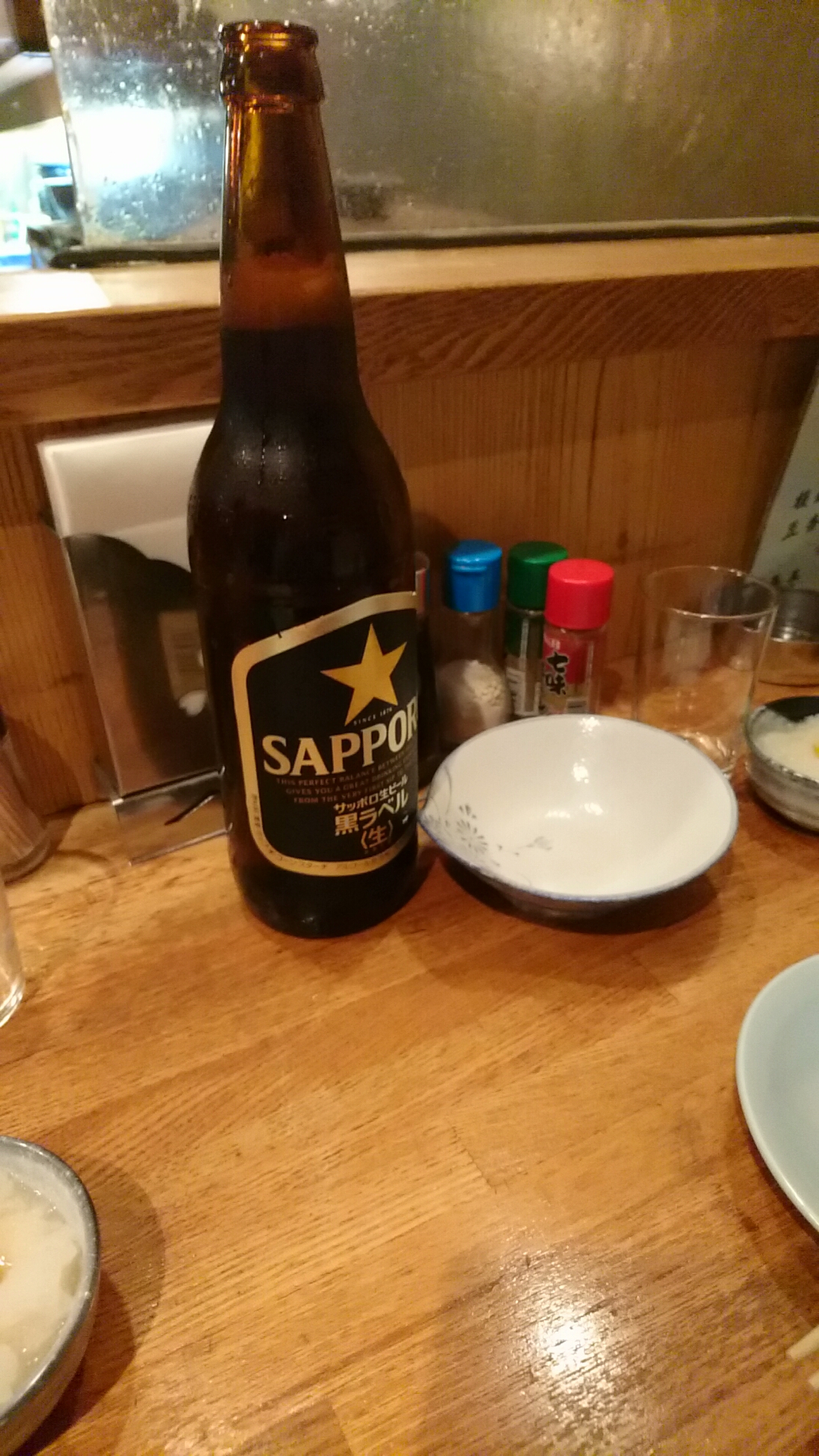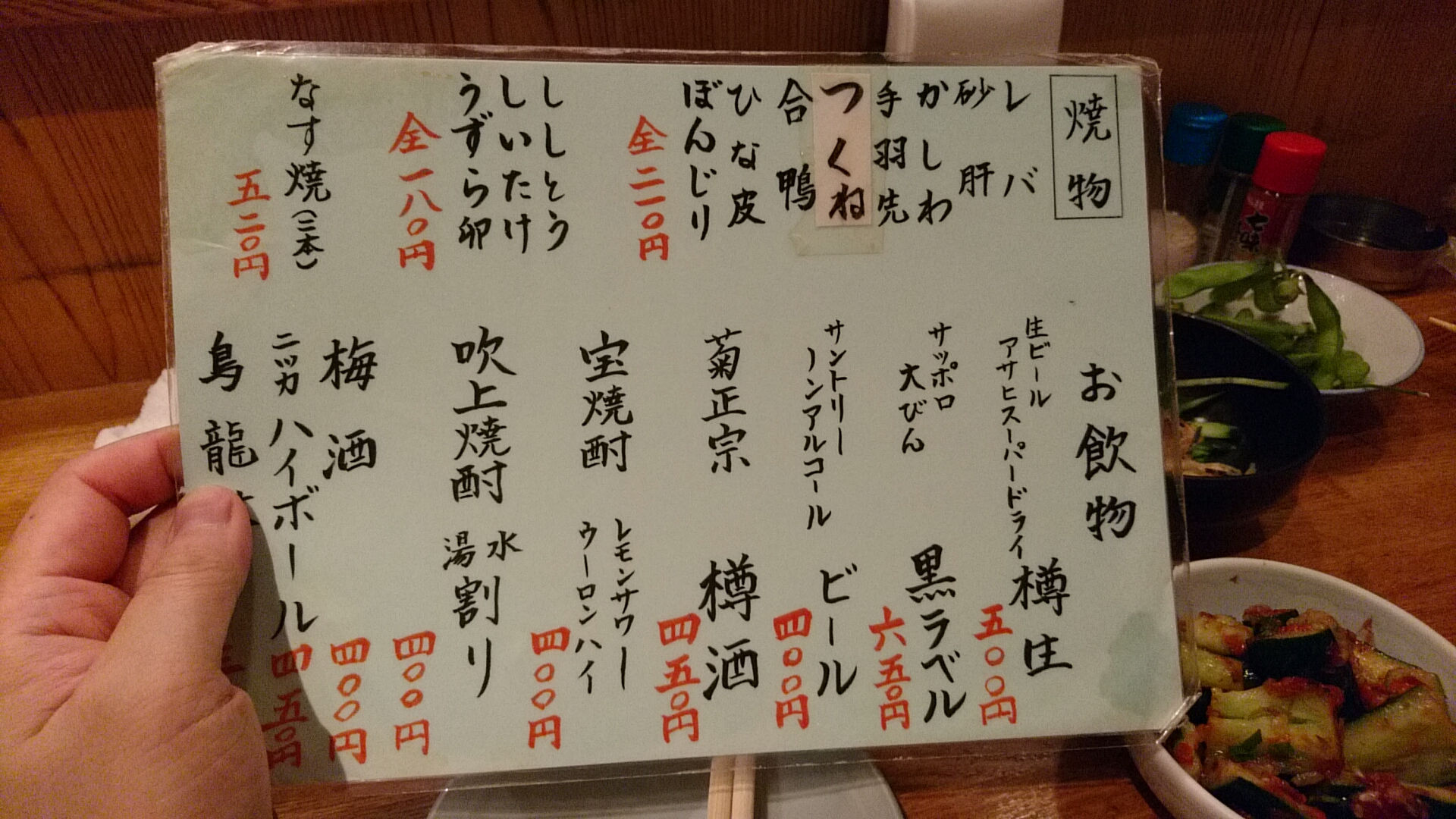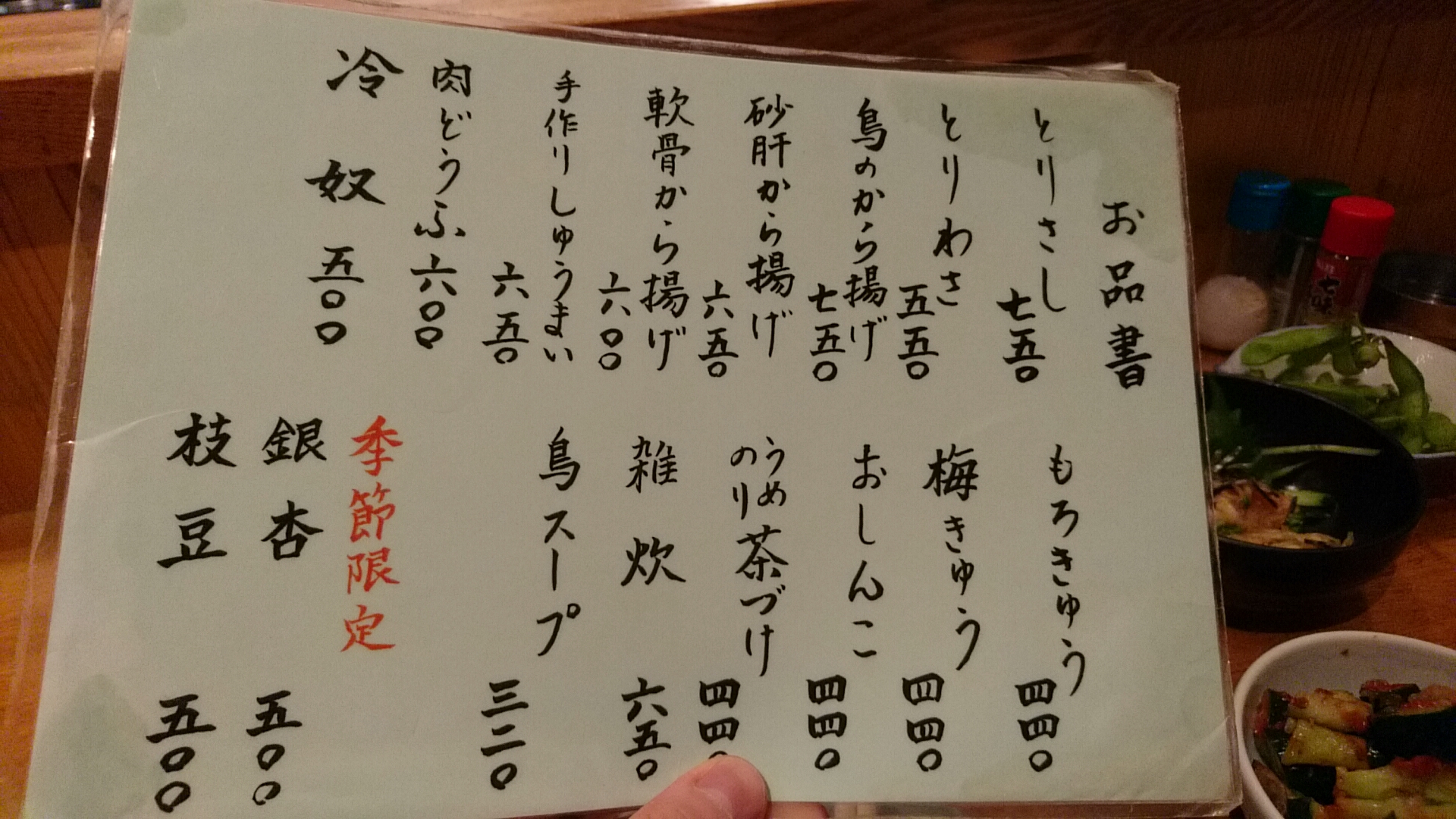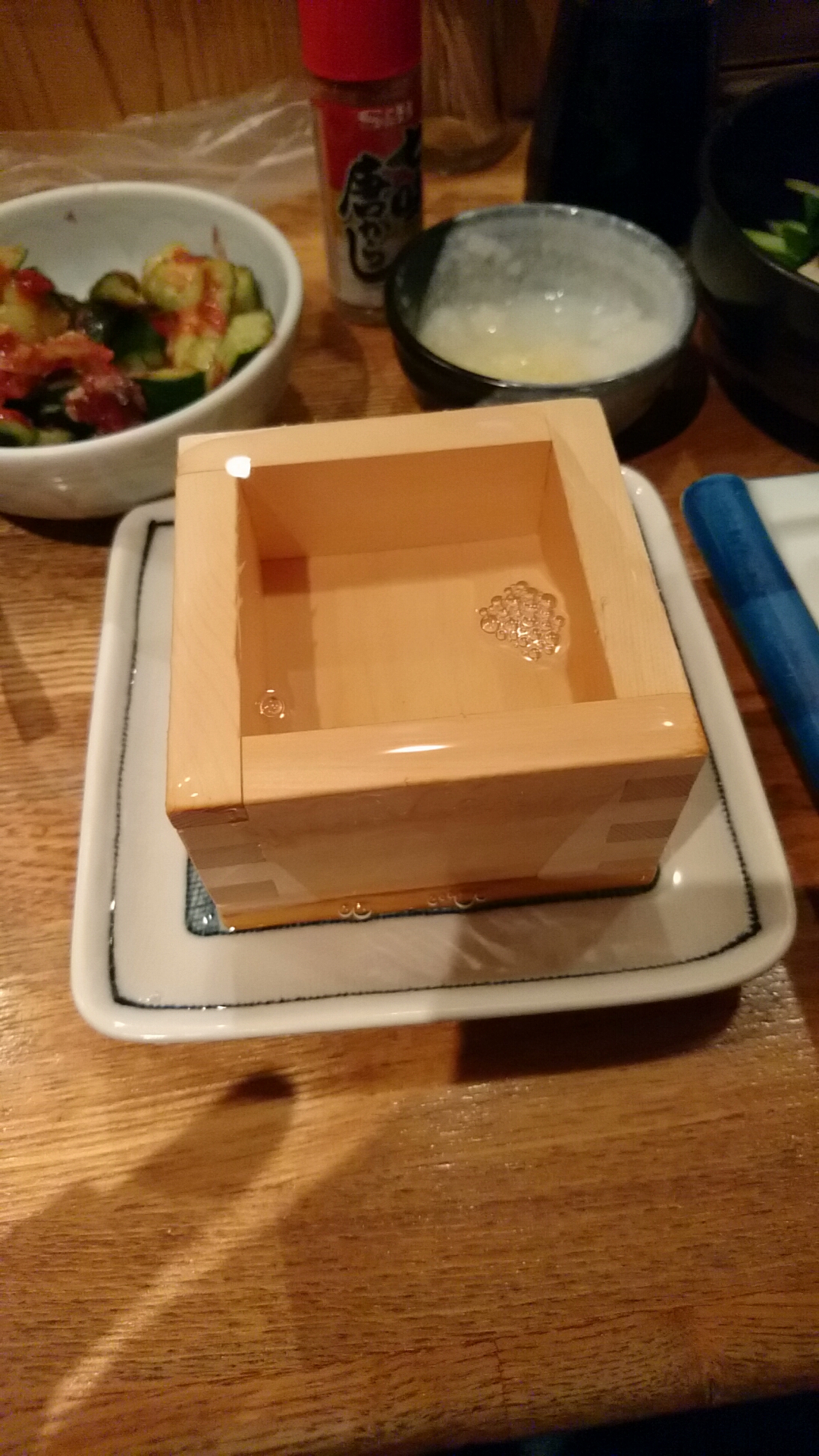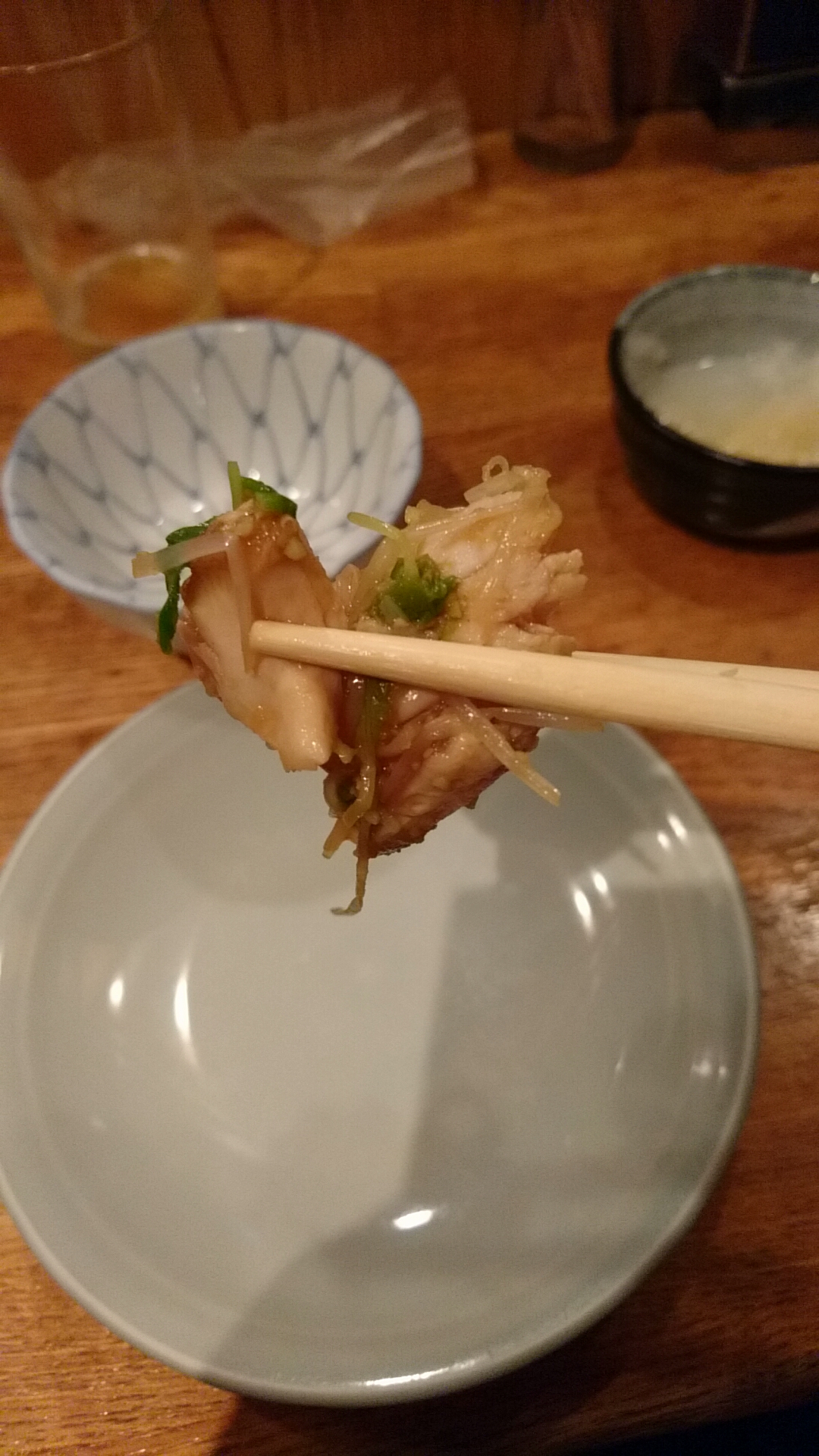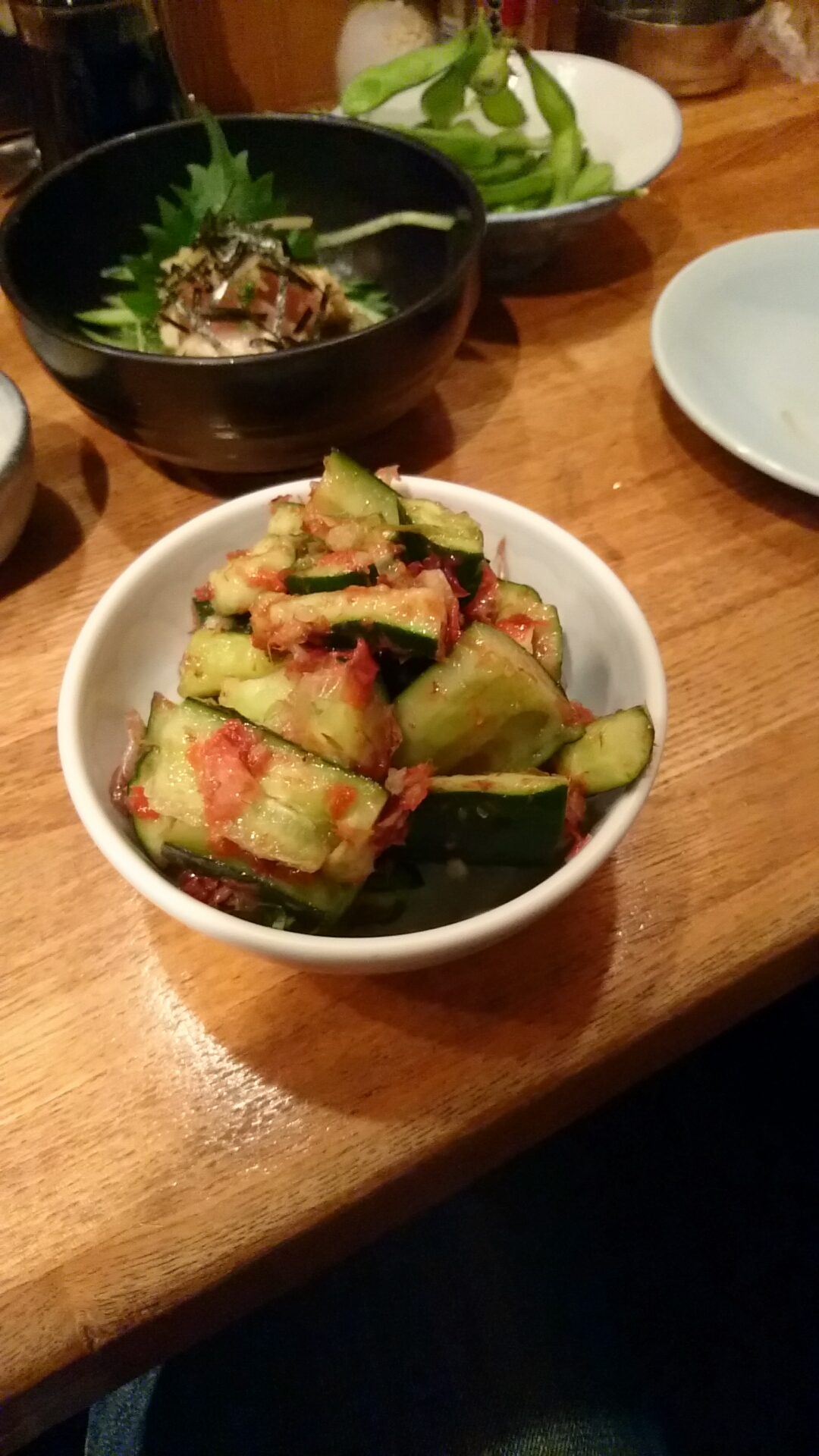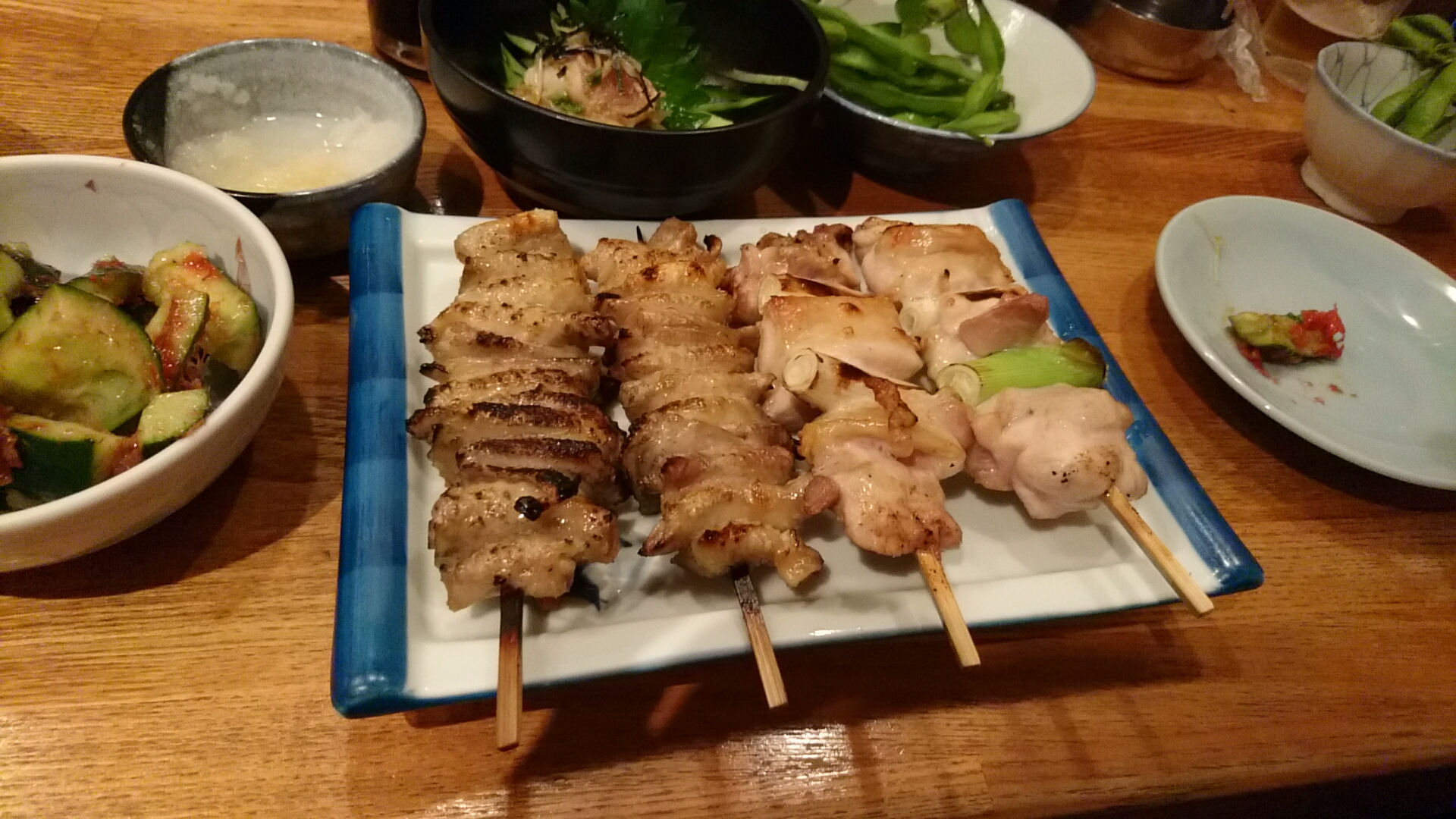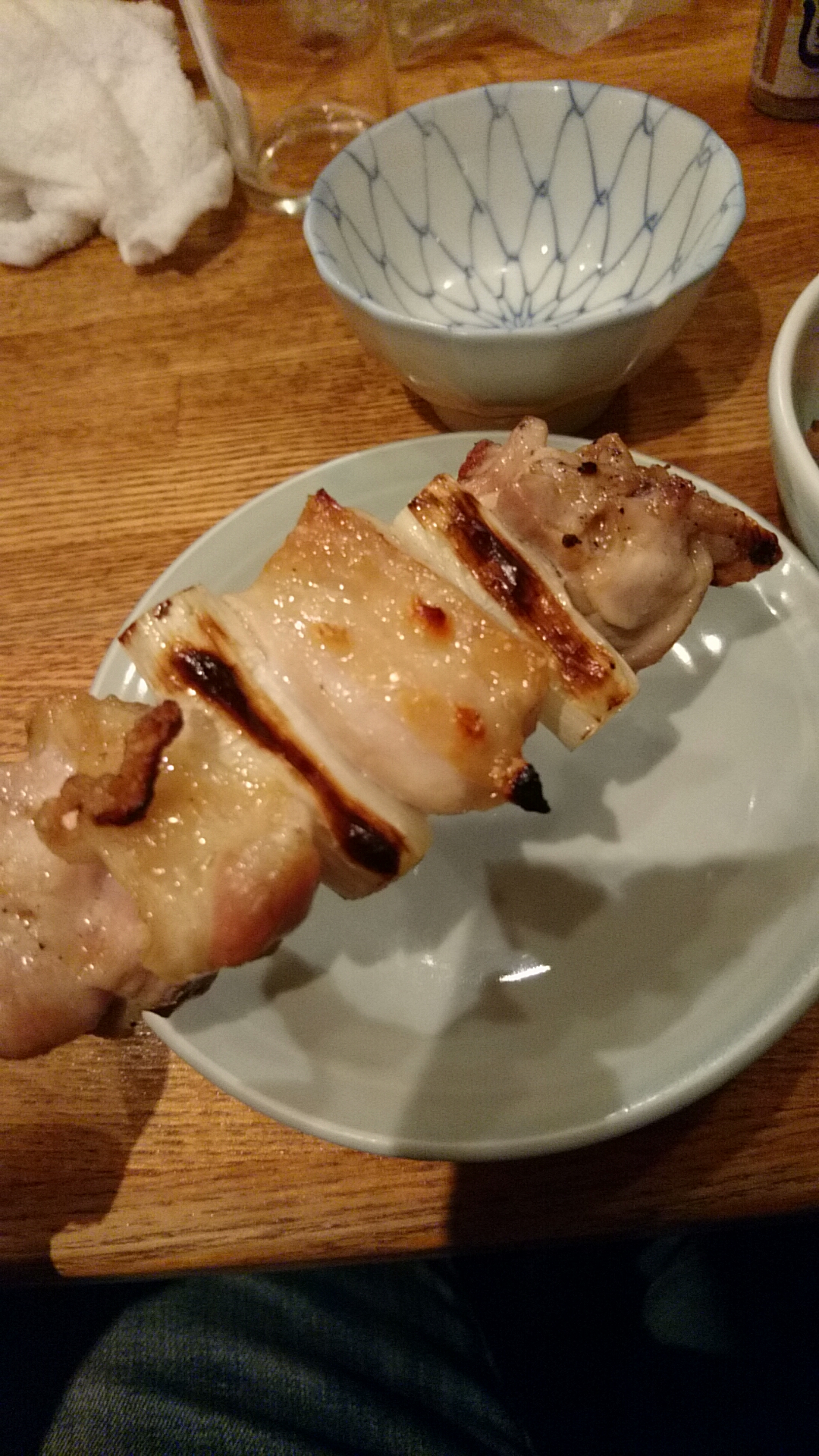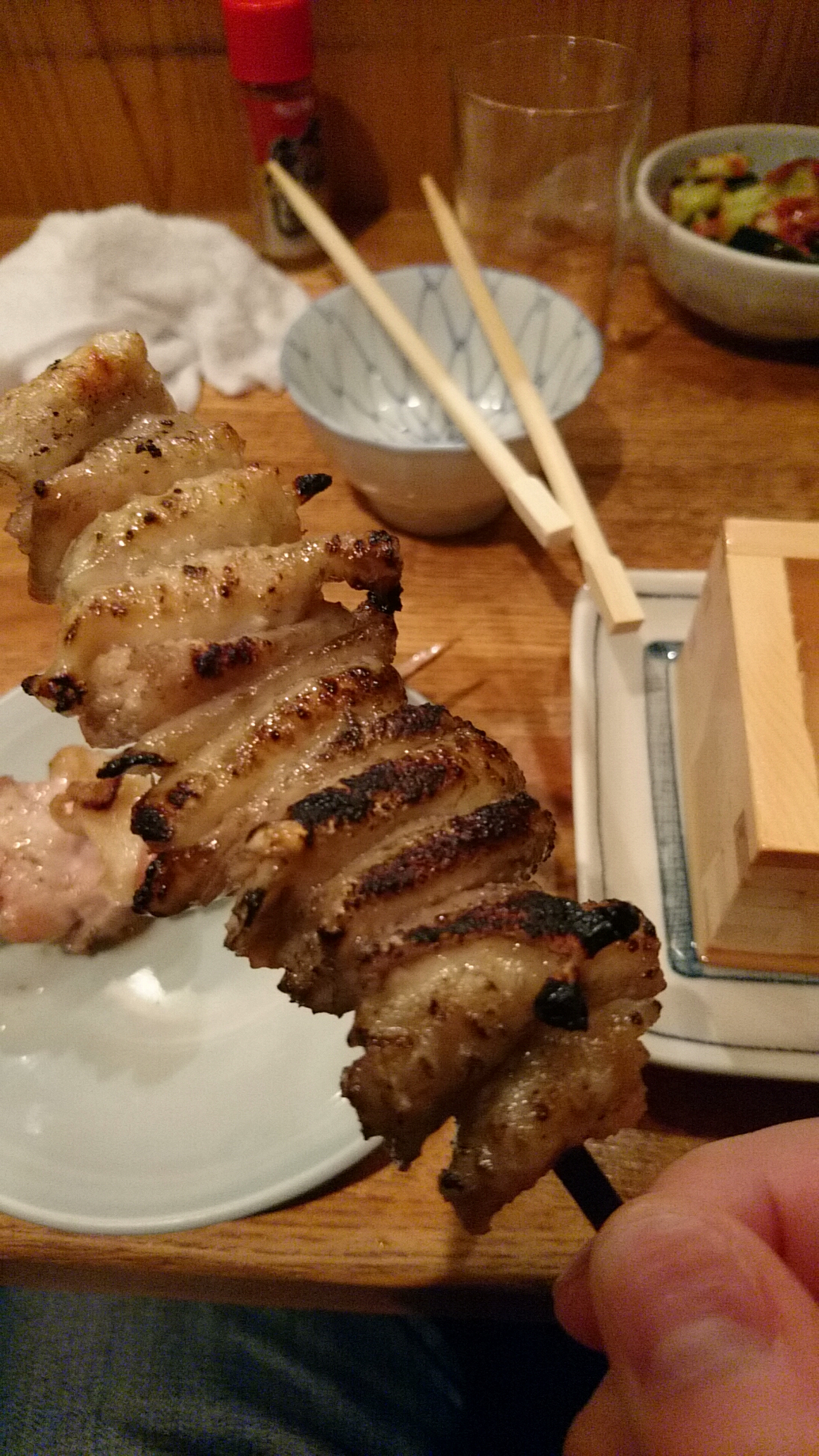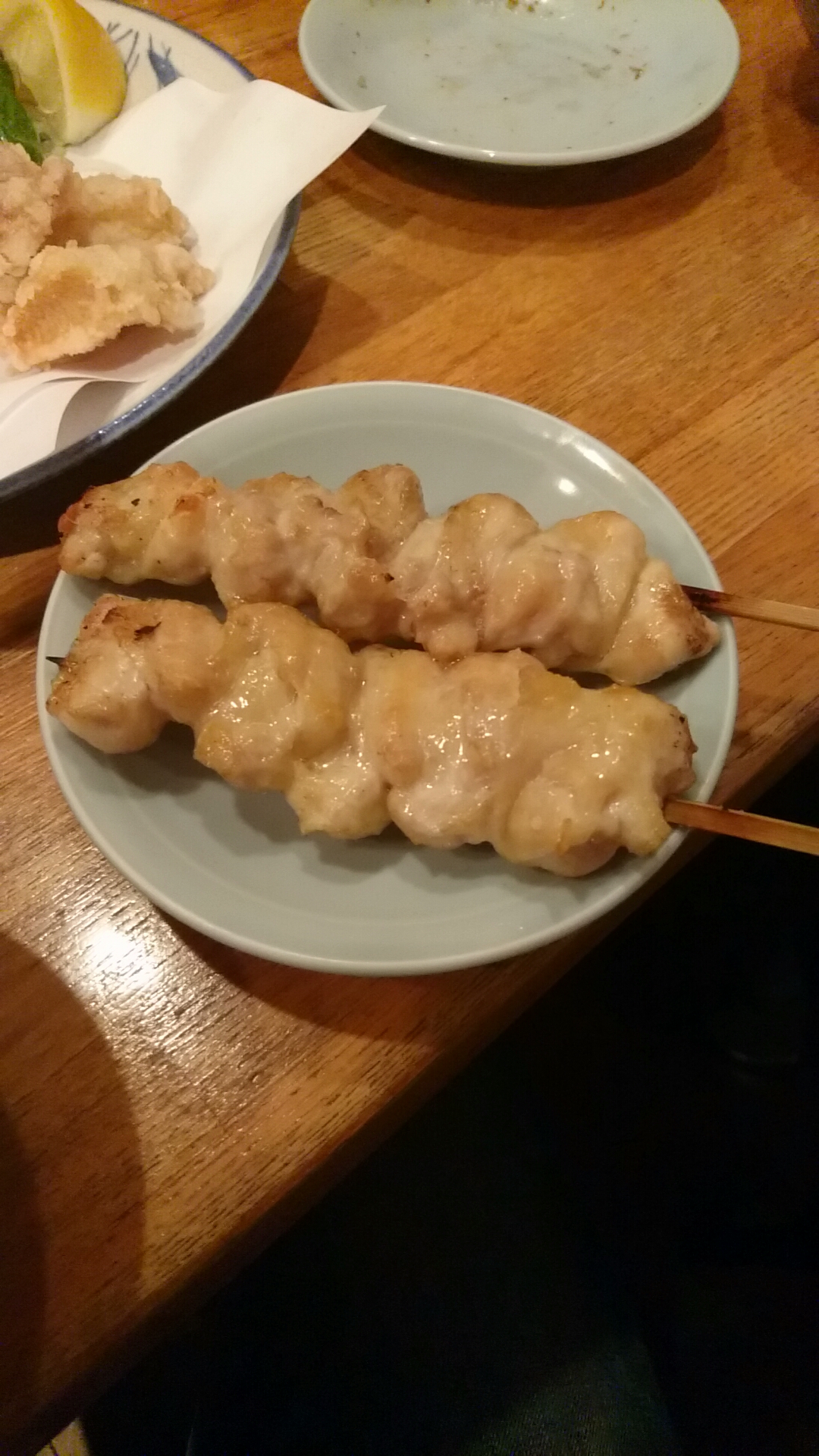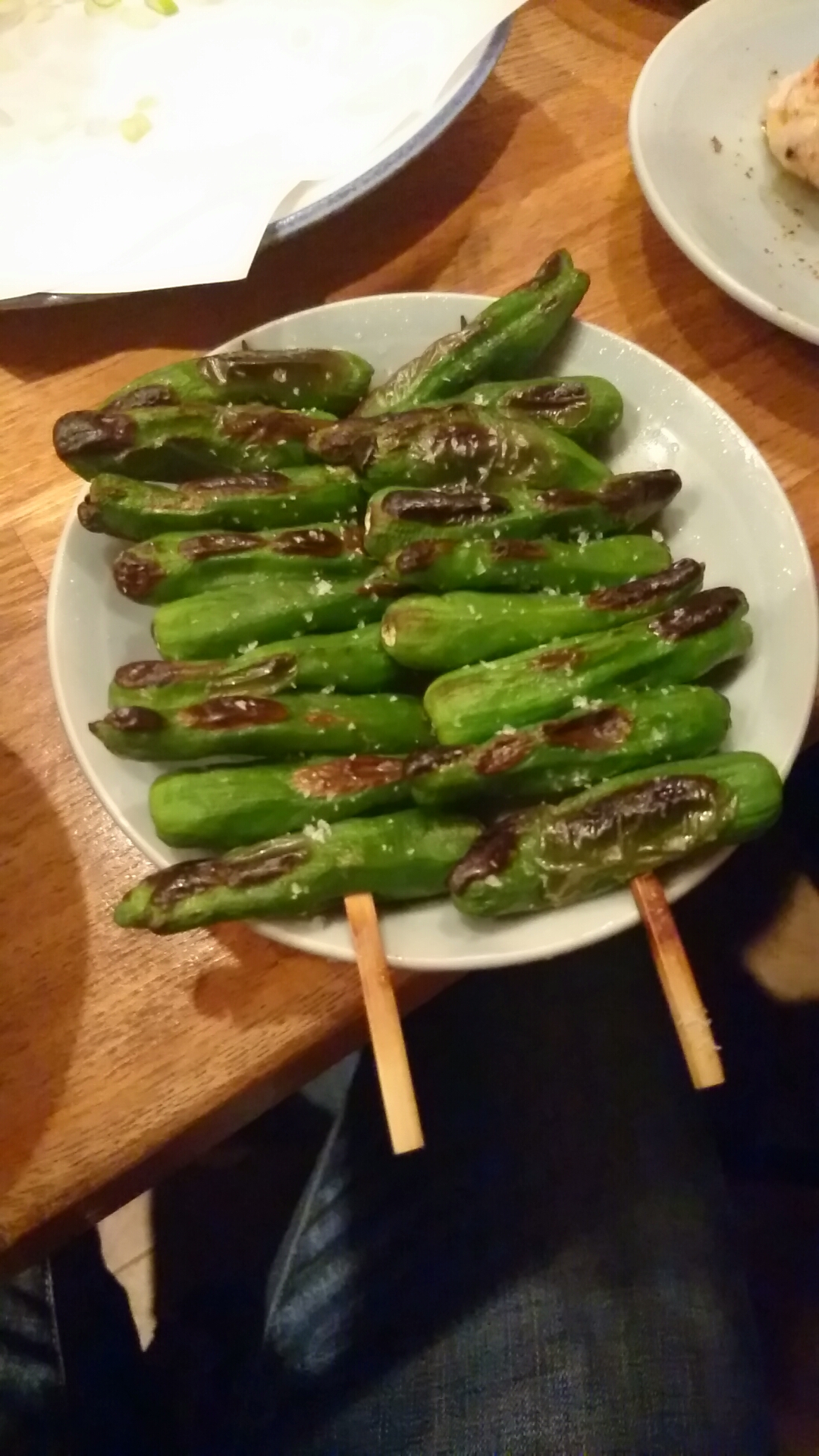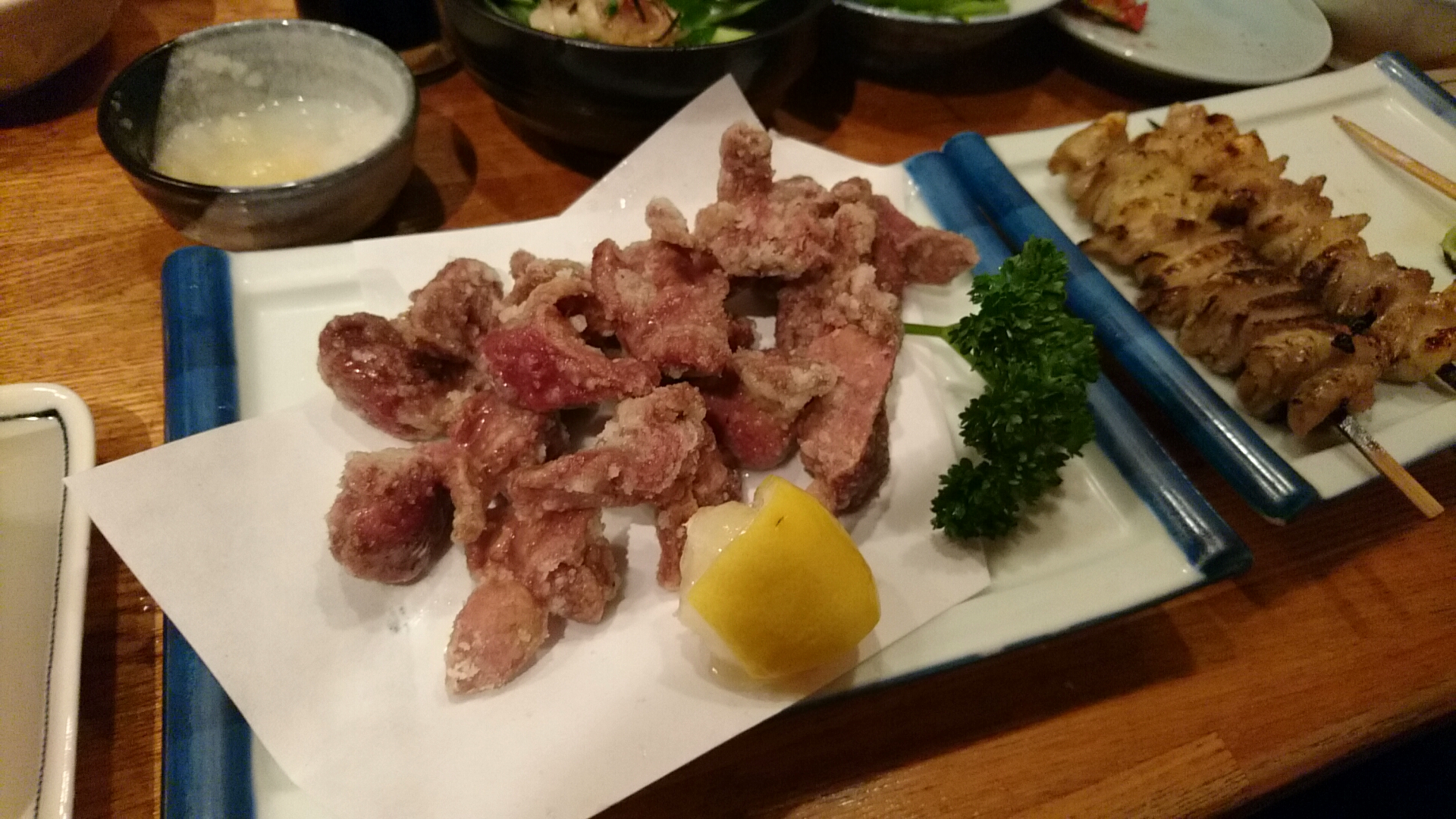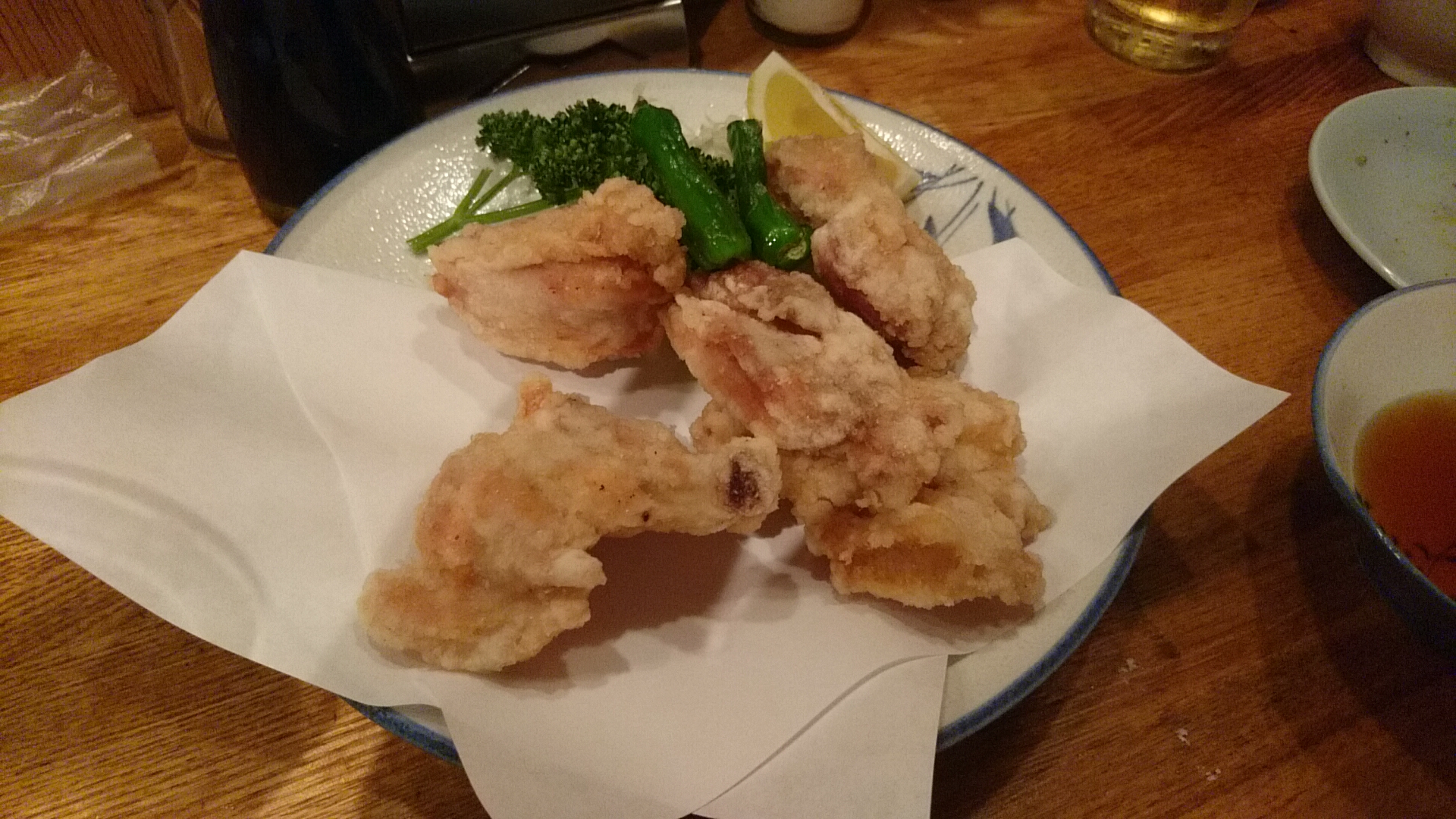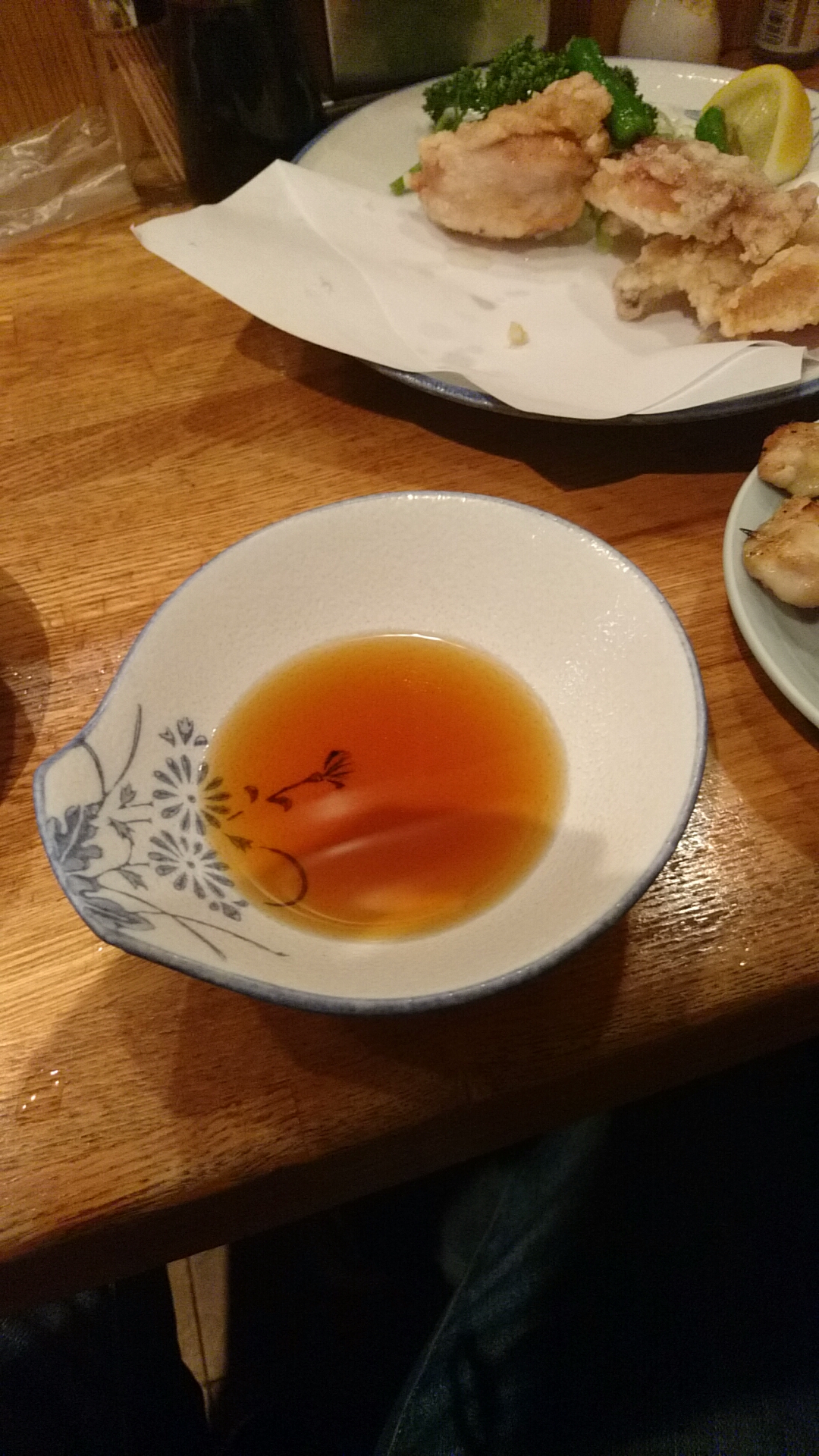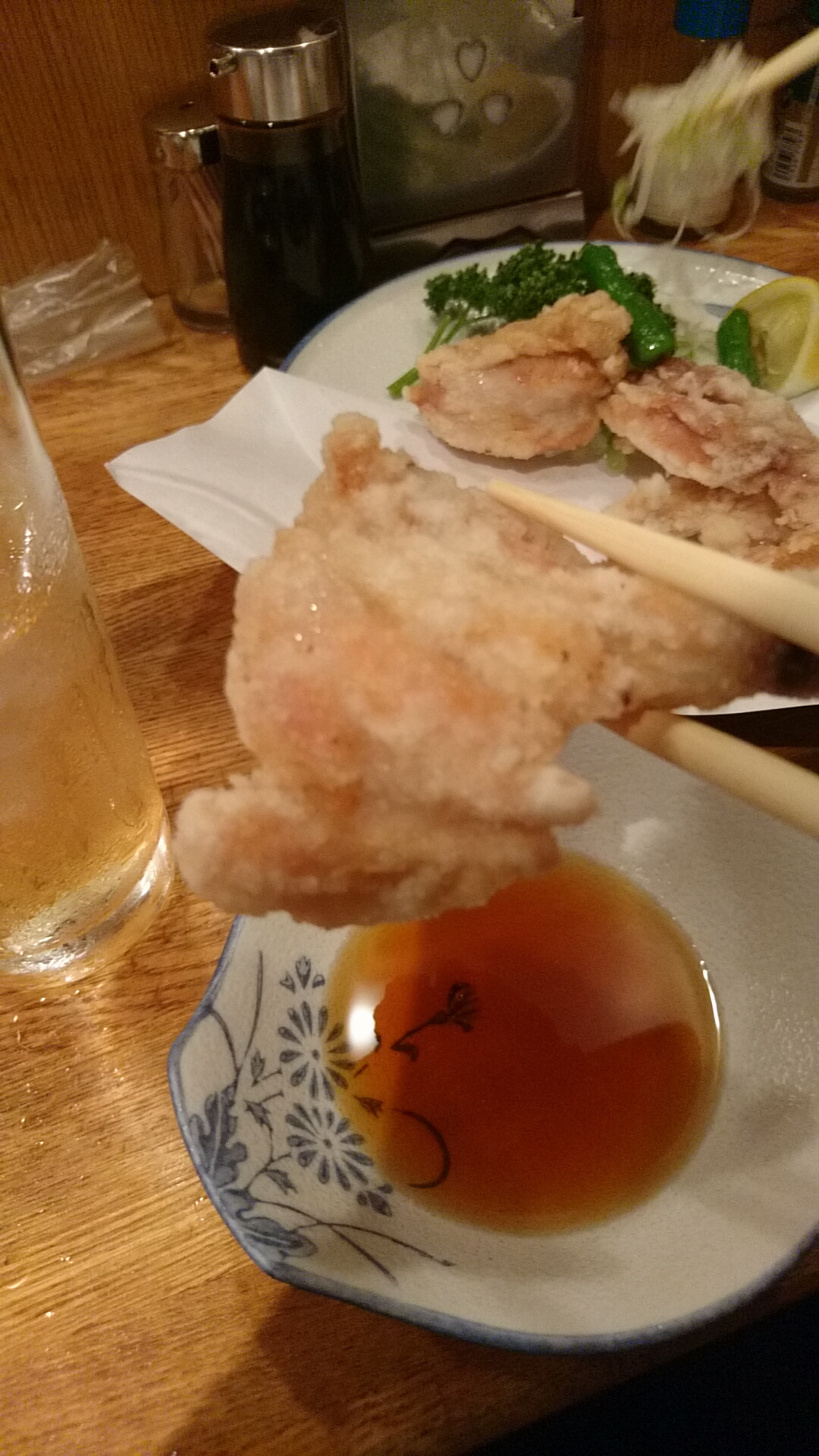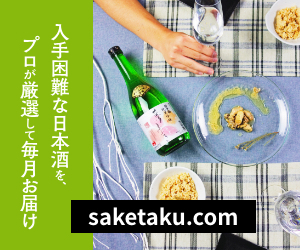- Home
- Report of Delicious Sake Serving Restaurants, My Three Meals, chuo
- Chicken Dishes and “Kikumasamune Taruzake” at “Yakitori Miyagawa”
Chicken Dishes and “Kikumasamune Taruzake” at “Yakitori Miyagawa”
- 2018/7/8

Good evening.
Thank you very much for reading this blog.
Today’s report is about a famous restaurant in Kayaba-cho, “Yakitori Miyagawa”.
The day I visited was a Friday. I took a day off to fill up a holiday shift on that day, and visited this restaurant with my senior ex-colleague with no reason.
This restaurant is famous, at least around Kayaba-cho. There are always many people who are queuing for the Kara-age (Japanese deep fried chicken) lunch. I don’t see a que in dinner time, but the inside of the restaurant is always full of people, or almost full.
I actually had been there once for lunch (their famous Kara-age lunch was sold out, so I had to take different menu..), but dinner time was always full, so I didn’t have chance to try at night time. However, on that day, there were free counter seats, so it was my first time to visit in dinner time.
The inside was full of people, so I didn’t take photos. There was a kitchen at the most back, and L-shaped counter in front of the kitchen. Before the counter, there were table seats.
We were guided to counter seats. The seats were nice location on the side line of “L”, and near windows.
We first ordered beer to refresh our throats because it was a hot day.
Their beer was Sapporo Black Label.
My personal opinion is that the restaurants who have special policy in their food and drink, and who serve delicious things, often have Sapporo compared to other types of restaurants.
I checked the menu while drinking my beer.
It might be seen that it’s poor in the number of the dishes and drinks. However, in management point of view, it often can’t be helped because controlling material and storage costs and labor cost is very important for running restaurants. Labor cost is more conspicuous, and if the restaurant is family-run it’s easier to reduce. On the other hand, I hear that the material cost often can be overlooked.
My father had a ramen restaurant, and he succeeded in our local area.
When he was alive, I asked him what is the most important thing for managing a restaurant. He mentioned the material cost for the first point.
“Reducing material cost” is done by reducing materials to dispose, and reducing the storage space. If a restaurant doesn’t care this point, it cannot make a profit even if the sales amount is ok.
The most effective way not to waste the material is to limit the number of menu they make, or to limit the kinds of ingredients.
It should be difficult for most of the restaurants like Izakaya because the customers prefer many choices of menus, but this “Yakitori Miyagawa” seemed controlling this point well.
Anyway, after having beer, the next was Sake!
I looked around in the restaurant to find more menu of Sake they had, but I couldn’t find others except for the menu book. I ordered a sake “Kikumasamune Taruzake”.
I don’t like taruzake’s (= cask sake) smell very much, so I usually don’t order taruzake. However, to be honest, I ordered this sake only for writing this article this time.
Surprisingly, this taruzake’s smell was not so strong and just right for me. The taste was dry like Kikumasamune, and the cask smell was added in the taste. The taste wasn’t too unique either, so I thought that people who don’t like cask sake like me should enjoy this.
When I had it with food, the taste and smell didn’t disturb the food’s flavor, and it rather helped feel clear on my tongue.
My senior ex-colleague had visited this restaurant many times for business meetings, so I asked him to choose the snack to go with “Kikumasamune Taruzake”.
The first choice was “Toriwasa” (half-cooked chicken with soy sauce and wasabi paste).
It was as the name is.
The light and plain taste of chicken and wasabi flavor matched, and it was good for sake.
The next one was “Umekyu” (chopped cucumbers with ‘Umeboshi’= ‘pickled Japanese plum’ paste).
The strong Umeboshi flavor made me feel like drinking more.
And then Yakitori (grilled chicken on sticks).
This one below is called “Negima” (chicken and leek blocks).
“Torikawa” (chicken skin)
“Momo” (chicken leg meat)
And, grilled Shishito green pepper (sweet green pepper).
All of them were big blocks, and the salt taste was just right.
The day was a holiday for me and I didn’t have breakfast and lunch on that day, so I ordered more to fill up my stomach.
The next was Sunagimo Kara-age (deep fried chicken gizzard).
It was a kind of crunchy texture of gizzard, but it wasn’t too hard. It was delicious.
Next I ordered Kara-age which you must order when you come to “Yakitori Miyagawa”.
A dipping sauce was served with the Kara-age.
But, let’s try it without sauce first.
The coating was light and crispy, and juice of rich chicken flavor came out when I had a bite.
Maybe the soup was ponzu vinegar (Japanese sauce made of citrus vinegar and soy sauce)??? It was a little sour. It went great with the crispy coating of Kara-age, and made inside of my mouth fresh. I’d wished to eat this Kara-age for 6 years, so it was more than great!
I was planning to order “Zousui” (Japanese rice porridge with some ingredients) or “Ochazuke” (rice with hot tea and seasoning poured on it) to conclude my dinner. Because we were sitting on counter seats in front of the kitchen, I was watching the chefs making foods while eating. I watched the staff making Zousui which looked very nice, so I was about to order Zousui.
Suddenly, my ex-colleague said, “Let’s go to the next bar!”. So I gave up the Zousui and we left the restaurant. I look forward to trying Zousui and Ochazuke next time.
It’s our great pleasure if this article is helpful for you.

Restaurant Information
| Shop Name | |
|---|---|
| Prefectures | - |
| Tel | |
| Address | |
| Nearest Station | |
| Homepage | - |
| Business Hours | - |
| Holiday | |
| Introduction | |
| Sake List |
|


